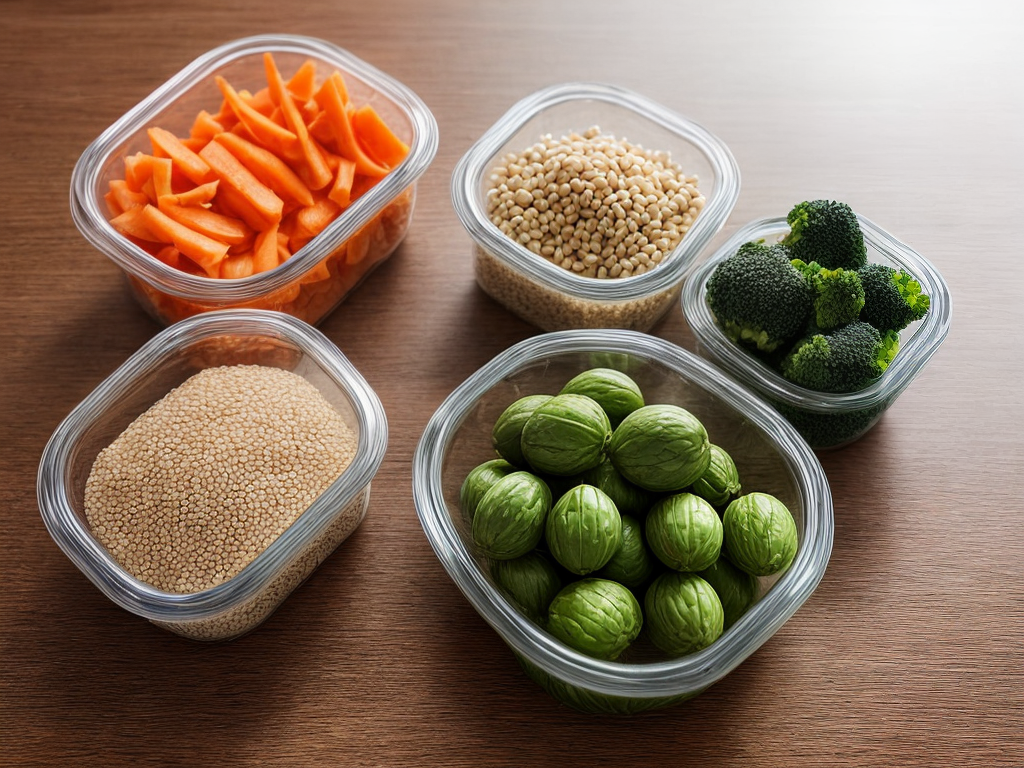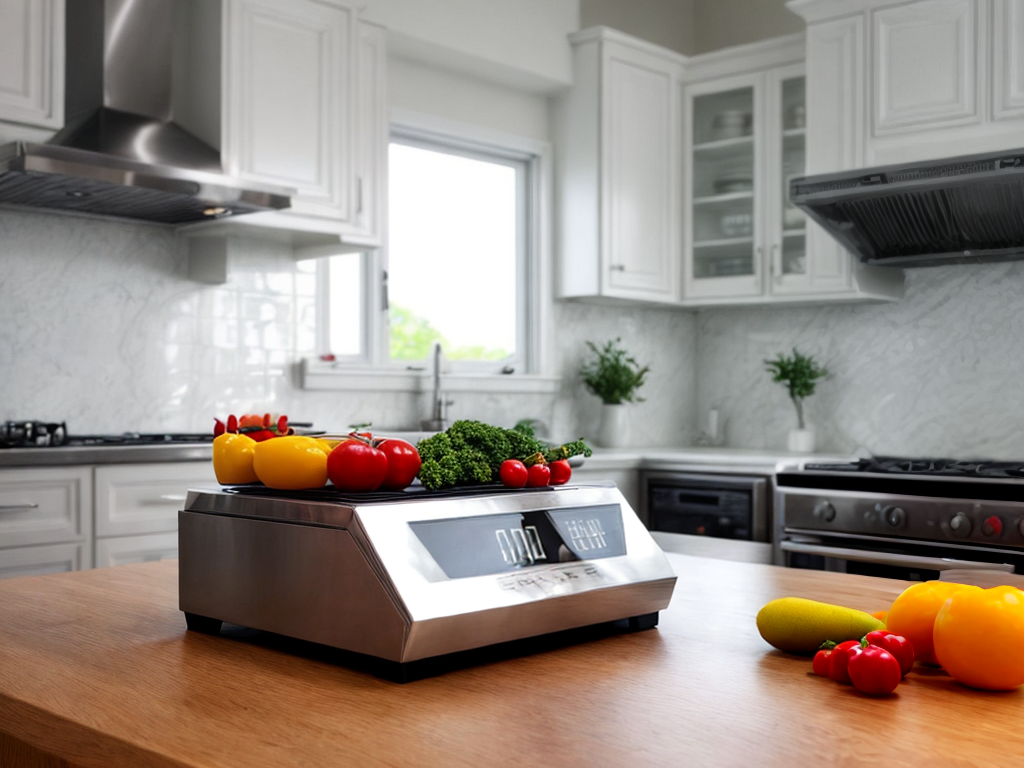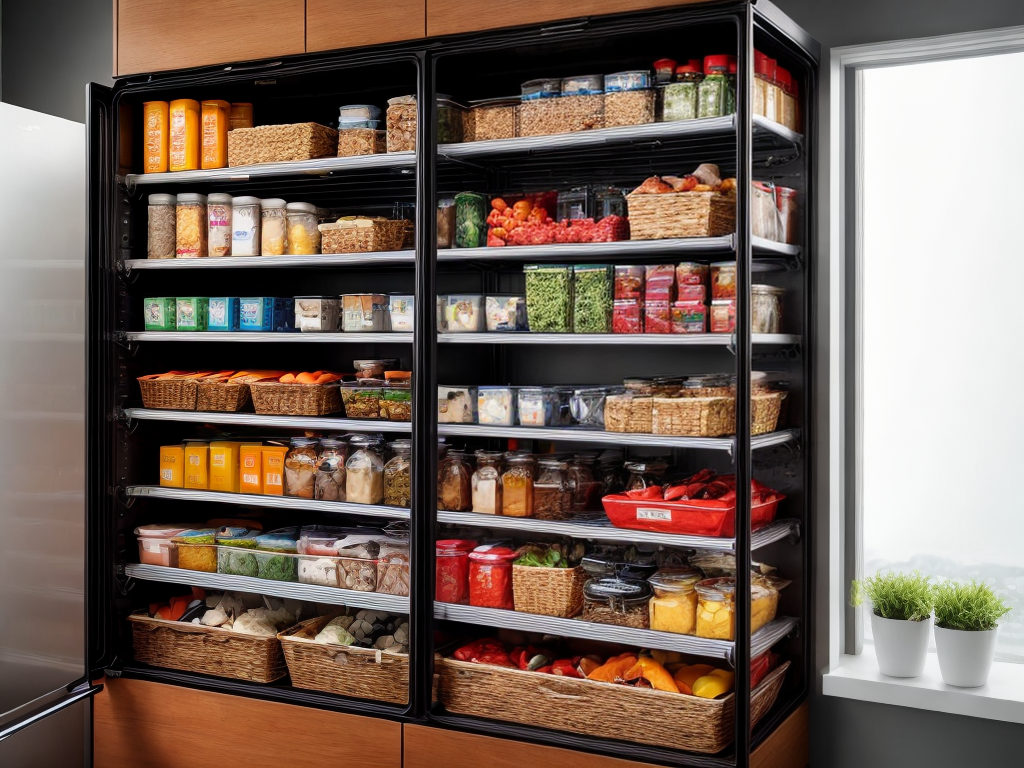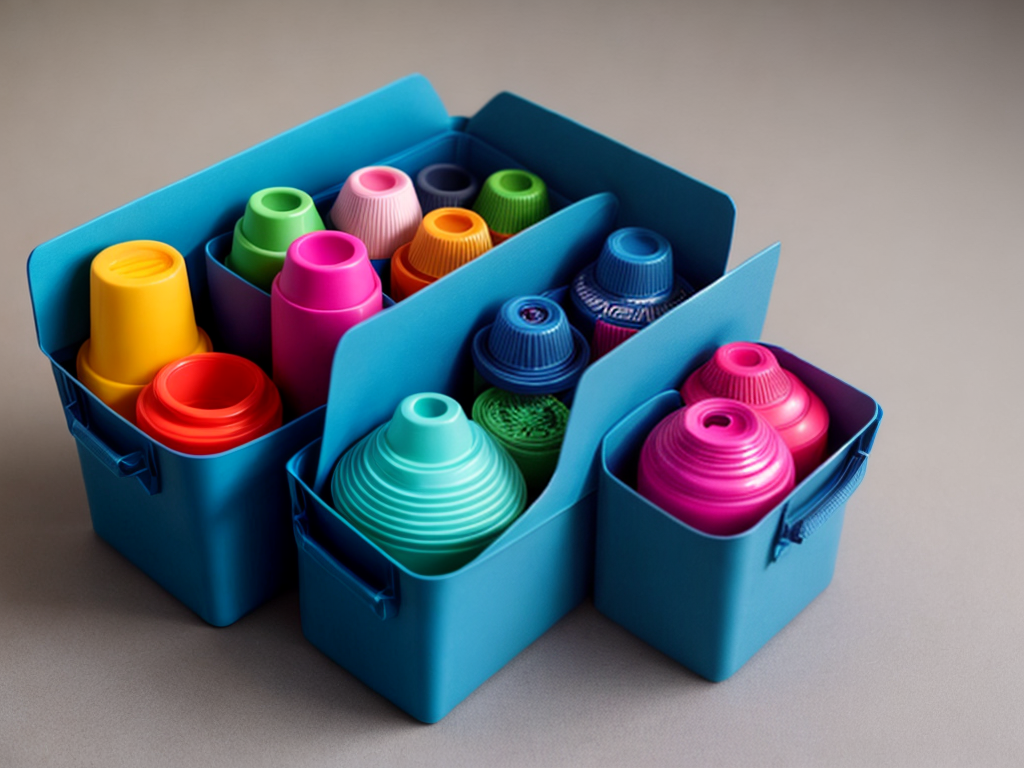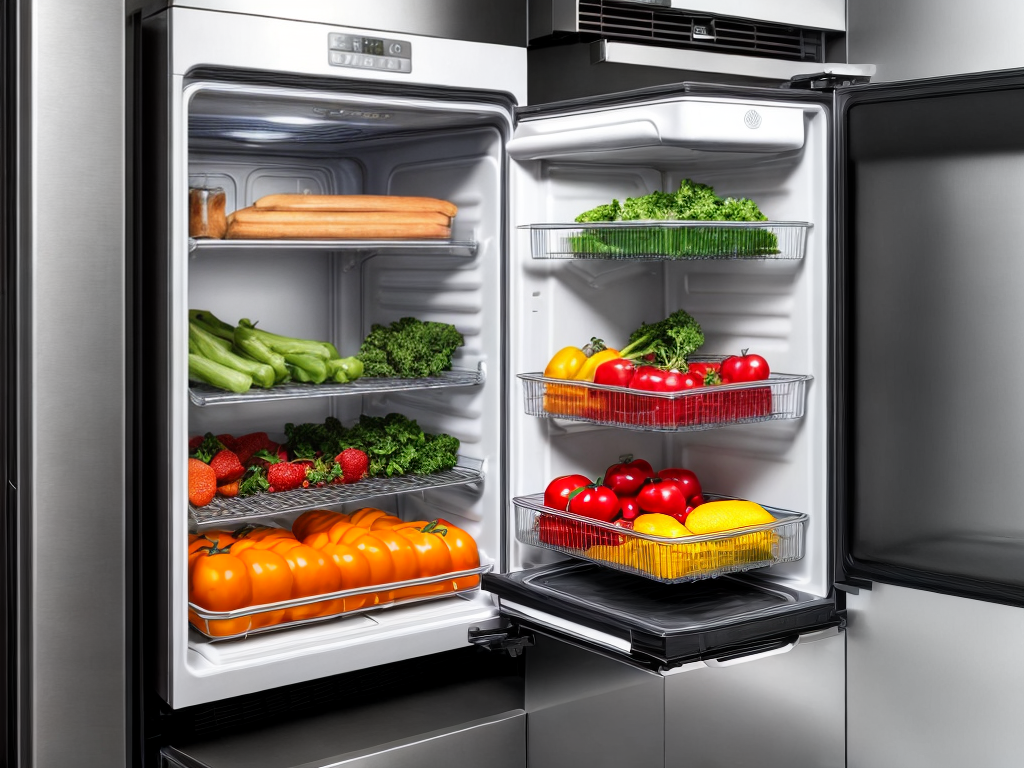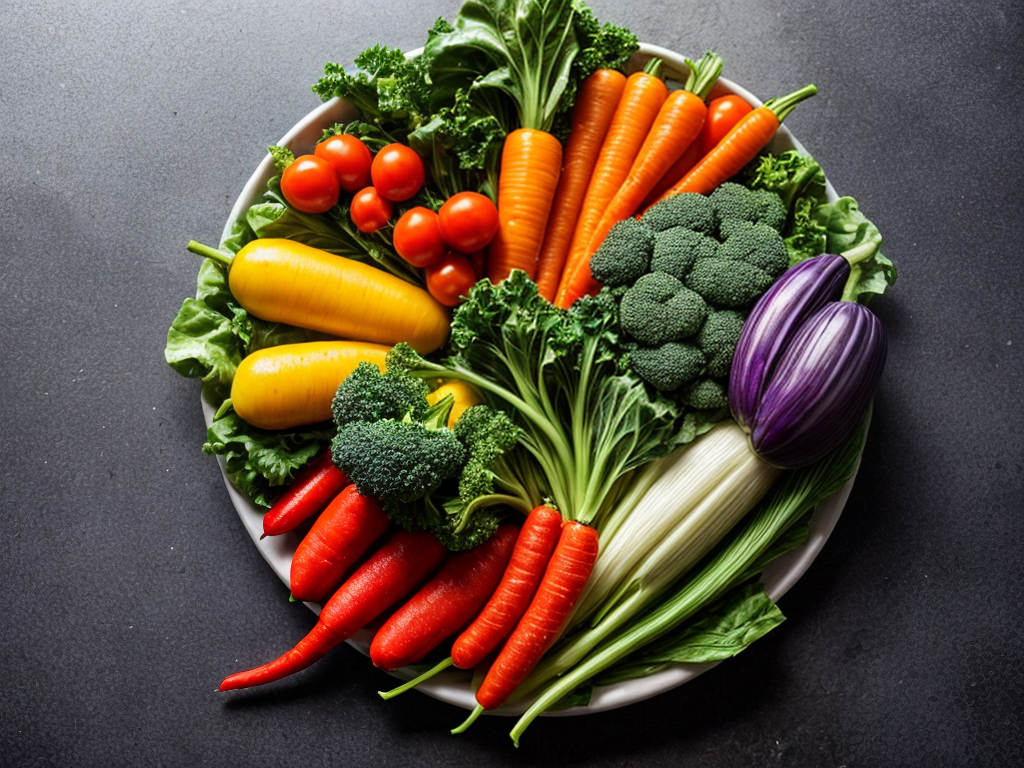
They say, “A stitch in time saves nine.” When it comes to vegetarian meal prep, this adage couldn’t be more true. Properly storing and preparing your veggies can make all the difference in maintaining their freshness and flavor. In this discussion, we will explore the essential steps to storing and preparing your veggies for delicious meals throughout the week. From choosing the right storage containers to organizing your fridge for easy access, we will cover it all. So, get ready to discover the secrets to maximizing the lifespan and taste of your vegetables. Let’s dive in and unlock the key to veggie success.
Choosing the Right Storage Containers
When it comes to meal prepping your vegetarian dishes, selecting the appropriate storage containers is crucial for maintaining freshness and maximizing convenience throughout the week. Choosing eco-friendly containers not only benefits the environment but also helps to preserve the quality of your food. Look for containers made from sustainable materials such as glass or BPA-free plastic. These options are reusable, durable, and safe for storing your meals.
In addition to choosing eco-friendly containers, maximizing fridge space is also important. Opt for stackable containers that can easily fit into the limited space of your refrigerator. This allows you to efficiently store multiple meals without taking up too much room. Additionally, consider using square or rectangular containers instead of round ones, as they make better use of space and can be easily organized.
Washing and Drying Your Veggies Properly
To ensure the cleanliness of your vegetables, proper washing and drying techniques are essential. Here are some steps to follow for effective vegetable washing and drying:
- Fill a clean sink or basin with cold water. Make sure it’s deep enough to submerge your vegetables.
- Gently place your vegetables into the water. Swirl them around to remove any dirt or debris. If you’re washing leafy greens, separate the leaves and wash them individually.
- After washing, carefully remove the vegetables from the water and rinse them under running water to remove any remaining dirt.
- Pat the vegetables dry with a clean kitchen towel or use a salad spinner to remove excess moisture. It’s important to dry them thoroughly to prevent bacterial growth and ensure they stay fresh for longer.
Properly washing and drying your vegetables is crucial for maintaining their quality and prolonging their shelf life. Clean vegetables not only taste better but are also safer to consume. By following these steps, you’ll ensure that your vegetables are free from dirt, pesticides, and other contaminants. Incorporating proper vegetable washing and drying techniques into your meal prep routine will not only contribute to the cleanliness of your meals but also help you reap the full benefits of meal prepping vegetables.
Prepping Veggies for Different Cooking Methods
When it comes to cooking veggies, there are two main factors to consider: whether to eat them raw or cooked, and which cooking method to use. Raw veggies can be great for salads and snacks, while cooked veggies can enhance their flavors and textures. When deciding between roasting and steaming, consider the desired outcome – roasting can bring out the natural sweetness and crispiness, while steaming retains more nutrients and keeps the veggies tender.
Raw Vs. Cooked Veggies
In my experience, I find that preparing vegetables in different ways, whether raw or cooked, can greatly enhance the flavors and textures of the final dish. When it comes to raw vs. cooked veggies, there are some health benefits to consider. Here are four things to keep in mind:
- Raw veggies retain more of their nutrients, as cooking can lead to nutrient loss.
- Cooking can break down tough fibers in vegetables, making them easier to digest.
- Raw veggies have a crisp and refreshing texture, while cooked veggies become soft and tender.
- Cooking can enhance the natural sweetness of vegetables, making them more flavorful.
Ultimately, the choice between raw and cooked veggies depends on personal preference and the specific dish you’re preparing. It’s important to strike a balance, incorporating both raw and cooked vegetables into your meals to reap the maximum health benefits.
Roasting Vs. Steaming
Roasting and steaming are two popular methods for cooking vegetables, each with its own unique benefits and flavors. When it comes to roasting, the vegetables are cooked at a high temperature, which results in a rich and caramelized flavor. To achieve the best results, it is important to cut the vegetables into uniform sizes and coat them with oil or seasoning before roasting. This method is great for root vegetables like potatoes and carrots. On the other hand, steaming vegetables involves cooking them with steam, which helps retain their natural flavors and nutrients. It is a quick and healthy cooking method that requires minimal oil or seasoning. Steaming is ideal for delicate vegetables like broccoli and asparagus. Both roasting and steaming have their own health benefits, so it’s a good idea to vary your cooking methods to enjoy the different flavors and nutrients that each method brings.
Blanching and Freezing Vegetables for Later Use
To preserve the freshness and nutritional value of your vegetables for future meals, blanching and freezing is a highly effective method. Here are some blanching techniques and freezing tips to help you get started:
- Blanching Techniques:
- Bring a pot of water to a boil and add a pinch of salt.
- Prepare an ice bath by filling a large bowl with cold water and ice cubes.
- Drop the vegetables into the boiling water and cook for a short time, usually 1-2 minutes.
- Use a slotted spoon to transfer the blanched vegetables into the ice bath to stop the cooking process.
- Freezing Tips:
- Drain the blanched vegetables thoroughly to remove excess water before freezing.
- Divide the vegetables into portion-sized freezer bags or containers for easy use later.
- Label each bag or container with the name of the vegetable and the date of freezing.
- Place the vegetables in the freezer and ensure they are stored in a single layer to freeze quickly and evenly.
Meal Prepping Vegetables for Salads and Stir-Fries
For meal prepping vegetables for salads and stir-fries, it is important to focus on freshness and convenience. Choosing the right vegetables is crucial to ensure that your meals are nutritious and flavorful. When it comes to salads, opt for vegetables with sturdy leaves that hold up well in the refrigerator, such as romaine lettuce, kale, and spinach. These greens can be washed, dried thoroughly, and stored in airtight containers or resealable bags for up to a week. For stir-fries, it is best to choose vegetables that retain their crunch even after cooking, like bell peppers, broccoli, and snap peas. These can be prepped by washing, chopping, and storing in containers in the refrigerator for easy access.
To help you with meal prepping, here is a table showcasing some common vegetables used in salads and stir-fries:
| Salad Vegetables | Stir-Fry Vegetables |
|---|---|
| Romaine Lettuce | Bell Peppers |
| Kale | Broccoli |
| Spinach | Snap Peas |
| Cucumber | Carrots |
Using Mason Jars for Veggie Snacks and Dressings
Using mason jars for veggie snacks and dressings is a smart and practical choice. They are portable and convenient, allowing you to easily take your healthy snacks on the go. Additionally, mason jars are a versatile storage option that can be used for a variety of purposes, making them a valuable addition to your meal prep routine. Lastly, their transparent design allows you to monitor your portion sizes, helping you stay on track with your healthy eating goals.
Portable and Convenient
How can mason jars make your vegetarian snacks and dressings more portable and convenient?
-
Snacks on the go: Mason jars are perfect for storing single-serving portions of cut vegetables, fruits, and nuts. Simply fill the jar with your favorite mix of veggies or fruits, seal it tightly, and toss it into your bag. It’s a convenient way to have a healthy snack wherever you go.
-
Dressings on demand: Instead of carrying bulky bottles of dressings, pour your homemade dressings into small mason jars. This allows you to control portion sizes and prevents messy spills. When it’s time to enjoy your salad, just pour the dressing onto your greens and mix it in. It’s a hassle-free way to add flavor to your meals.
-
Easy meal prep: Mason jars can be used for prepping complete meals in advance. Layer your favorite veggies, grains, and proteins in the jars, and seal them tightly. When you’re ready to eat, just give the jar a shake or heat it up. It’s a simple and efficient method for portable meal ideas.
-
Portion control: Mason jars come in various sizes, making it easy to portion out your snacks and dressings. By using these jars, you can ensure you’re not overeating and maintain a balanced diet. It’s a practical way to control your food intake and make healthier choices.
Mason jars are a versatile and convenient option for storing and transporting your vegetarian snacks and dressings. Their portability, ease of use, and portion control capabilities make them an essential tool for any vegetarian meal prep.
Versatile Storage Option
Mason jars offer a versatile storage option for keeping your vegetarian snacks and dressings fresh and easily accessible. These sturdy glass containers are not only practical but also visually appealing. They come in various sizes, allowing you to store different quantities of veggies and dressings. Here are some of the best ways to store your veggies in mason jars:
| Vegetables | Storage Method |
|---|---|
| Carrots | Sliced and stored in water to maintain crispness |
| Cherry Tomatoes | Whole and stored in olive oil for added flavor |
| Cucumbers | Sliced and stored in vinegar for a tangy twist |
| Bell Peppers | Roasted and stored in their own juices for enhanced flavor |
Using mason jars to store your veggie snacks and dressings not only keeps them fresh but also makes it easy to grab a healthy snack on the go. Plus, the clear glass allows you to see what’s inside, making it convenient to monitor your food inventory.
Easy to Monitor Portions
With the use of mason jars, monitoring your portions of veggie snacks and dressings becomes effortless. Here’s how:
-
Portion control: Mason jars come in various sizes, allowing you to pre-portion your snacks and dressings. This helps you avoid overeating and ensures you consume the right amount for your meal plan.
-
Clear visibility: The transparent glass of mason jars lets you see the exact amount of veggies or dressing you have. This visual cue helps you stay mindful of your portion sizes and make adjustments if needed.
-
Easy to grab: Mason jars are portable and convenient. You can prepare your veggie snacks and dressings ahead of time and store them in the jars. This makes it easy to grab a portioned snack or dressing on the go.
-
Versatility: Mason jars can be used for various types of veggie snacks and dressings. Whether it’s a mixed salad, roasted veggies, or a homemade dressing, you can store them all in separate jars, making meal planning a breeze.
Properly Storing Leafy Greens to Extend Freshness
To maintain the freshness of your leafy greens for longer periods, it is essential to store them properly. Choosing the best leafy greens for meal prep is the first step towards ensuring their longevity. Opt for greens that are crisp, vibrant, and free from any signs of wilting or browning. Look for fresh, green leaves that are not wilted or slimy, as these indicate spoilage. Additionally, consider the type of leafy greens you are storing. Delicate greens like spinach and arugula require gentle handling, while sturdier greens like kale and collard greens can withstand slightly rougher treatment.
Preventing wilting and browning of leafy greens starts with proper storage. After purchasing or harvesting your greens, remove any damaged or yellowing leaves and discard them. Then, wash the greens thoroughly and dry them completely before storage. Excess moisture can lead to the growth of bacteria and accelerate spoilage. Once dry, store the greens in a perforated plastic bag or airtight container lined with a paper towel to absorb excess moisture. This helps to maintain the optimal level of humidity and prevent the greens from wilting.
Remember to keep your leafy greens refrigerated at a temperature between 32-40°F (0-4°C) to slow down the deterioration process. Avoid storing them near ethylene-producing fruits like apples, bananas, or tomatoes, as ethylene can accelerate the browning and decay of leafy greens. By following these storage techniques, you can extend the freshness of your leafy greens and enjoy their nutritional benefits for a longer time.
Tips for Organizing Your Fridge for Easy Veggie Access
For easy access to your veggies, it’s important to organize your fridge in a way that maximizes visibility and keeps everything within reach. Here are some tips to help you organize your fridge for easy veggie access:
-
Choose the right storage containers: Opt for clear, airtight containers that allow you to see what’s inside without having to open them. This way, you can quickly find the vegetables you need, saving you time and effort.
-
Group similar vegetables together: Arrange your veggies in groups based on their type or usage. For example, keep all leafy greens together in one section and root vegetables in another. This makes it easier to locate specific vegetables when you need them.
-
Use designated drawers: Most fridges come with specialized drawers for fruits and vegetables. Utilize these drawers to store your veggies. They provide a controlled environment that helps maintain freshness and prevents cross-contamination.
-
Properly store leafy greens: To keep your leafy greens fresh for longer, remove any rubber bands or ties and store them in breathable bags or containers. You can also place a paper towel inside the container to absorb excess moisture and prevent wilting.
Conclusion
In conclusion, properly storing and preparing your veggies is essential for maintaining their freshness and maximizing their nutritional value. By choosing the right storage containers, washing and drying your veggies properly, and prepping them for different cooking methods, you can ensure that they stay fresh and delicious. Additionally, blanching and freezing vegetables can help extend their shelf life for later use. Using mason jars for veggie snacks and dressings, as well as organizing your fridge for easy access, can also make meal prepping a breeze. Happy veggie prepping!

